|
|
History of
79. Infanteriedivision and Infanterieregiment 226
Division Kommanders
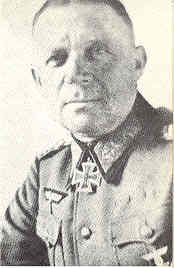 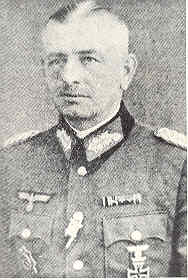 
General d. Inf. Karl Strecker, Generalleutnant von Schwerin, Generalleutnant Weinknecht
Regimental Kommanders
JR208 JR212 JR226 AR179
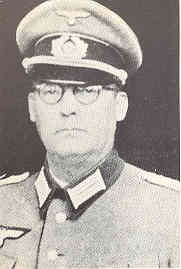  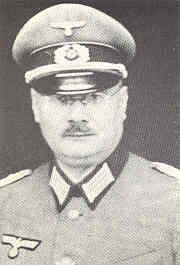  Oberst v. Wedel, Oberst v. Schwerin, Oberst Schreiber, Oberstlt. Babinger
Oberst v. Wedel, Oberst v. Schwerin, Oberst Schreiber, Oberstlt. Babinger
Ritterkreuzträger JR226

Hauptmann Karl - Willi Lumpp,
Ritterkreuztrager, 3 Komp, JR 226, 18. Juli 1943

Oberst Andreas von Aulock, Regimentführer GR 226, Oakleaves number 551 to the Knight's Cross,
(From "Festung St.-Malo" - by Hans Sahhers 2001. ISBN: 90-76396-10-8)
Oberleutnant Fritz Krueck, Batallionführer II/GR 226, 5. März 1945 Hauptmann Hans-Hermann Moeckel, Kampfgruppeführer, GR 226, 17. April 1945
Composition:
 |
Infanterieregiment nr. 208 |
 |
Infanterieregiment nr. 212 |
 |
Infanterieregiment nr. 226 |
 |
Artillerieregiment nr. 179 |
 |
179. Reconnaissance Bataillon |
 |
179. Signals Bataillon |

Home Station: Koblenz, Wehrkries XII
The 79. Infantry Division (InfDiv) was formed on August 26, 1939, as part of the mobilization of the German Army that occurred in the summer of 1939. When the Second World War began on September 1, 1939, the 79. InfDiv was on the French-German border in the Saar, training and working on the West Wall defenses. The Division saw only light action from October 1939 to the end of May 1940 when British and French forces made probing assaults into the 79.’s defensive positions. It was during this period that the Division acquired its motto, "Tapfer und Treu" (Brave and Loyal).
France
The 79. invaded France on May 10, 1940, and took part in the offensives across the Rhine-Marne Canal near Parroy and the Moselle River near Chatel. At the end of May the 79. withdrew back into the Saar, and in June participated in attacks on the Maginot Line, concluding the campaign in France with the capture of Epinal on June 21, 1940.
 From the end of June 1940 to April 1941, the 79. participated in occupation duties in France. During this time the Division trained to participate in Operation Sea Lion, the planned invasion of England. When it became apparent that the invasion would not take place, the 79. continued it’s training and took advantage of the time to permit the unit some "R&R."
From the end of June 1940 to April 1941, the 79. participated in occupation duties in France. During this time the Division trained to participate in Operation Sea Lion, the planned invasion of England. When it became apparent that the invasion would not take place, the 79. continued it’s training and took advantage of the time to permit the unit some "R&R."
 When the attack on Yugoslavia took place in April of 1941, the 79. was sent back to Germany, in the area of Klagenfurt-Wolfsburg, to participate in the campaign. By the time the Division was relocated, it was not needed for the campaign, and was instead, sent to western Poland, to participate in Operation Barbarosa, the invasion of Russia.
When the attack on Yugoslavia took place in April of 1941, the 79. was sent back to Germany, in the area of Klagenfurt-Wolfsburg, to participate in the campaign. By the time the Division was relocated, it was not needed for the campaign, and was instead, sent to western Poland, to participate in Operation Barbarosa, the invasion of Russia.
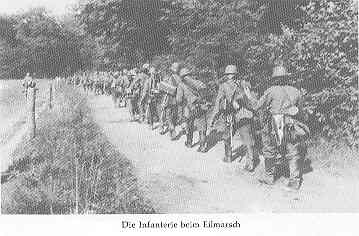
Operation Barbarosa
When the 79. was committed to the invasion of Russia on June 26, 1941, little would the members of the Division realize that they had started the long road to disaster. From June 1941 to September 1942 the 79. fought its way into Russia, encountering strong resistance from Russian forces as well as fierce cold weather during the winter of 1941. The Division participated in actions in the southern portion of Russia via Korosten, Lutsk, Rovno, Piryatin, and Akhtyrka. From November 1941 to June 1942 the Division fought in the Belogorod and Volchansk areas. The Division then advanced from Volchansk via Valuiki, Rovenki, and Serafimovich. By October 1942 the Division was in the marshes between the Don and Volga Rivers, and received orders to the place that was to become the end of the Division's march into Russia, Stalingrad.
Stalingrad
 The 79. began its attack, as part of the Sixth Army, on Stalingrad on October 17, 1942, with the assignment of entering the city and taking the Red October tractor factory. The fighting, hall by hall, was fierce, with the Division taking many casualties. The Russian surprise offensive on November 19, 1942, collapsed the northwest flank of German defenses of the city, and a second attack the next day found the defending German forces in the process of being cut-off and surrounded. By November 24, 1942, the Russian forces joined up west of Stalingrad. As the Russians tightened their grip on the city, desperate attempts by the Luftwaffe to support the German units within the city failed. The 79. began its attack, as part of the Sixth Army, on Stalingrad on October 17, 1942, with the assignment of entering the city and taking the Red October tractor factory. The fighting, hall by hall, was fierce, with the Division taking many casualties. The Russian surprise offensive on November 19, 1942, collapsed the northwest flank of German defenses of the city, and a second attack the next day found the defending German forces in the process of being cut-off and surrounded. By November 24, 1942, the Russian forces joined up west of Stalingrad. As the Russians tightened their grip on the city, desperate attempts by the Luftwaffe to support the German units within the city failed.
 On January 7, 1943, what was left of the 79. InfDiv was transferred to the 305th InfDiv. With Hitler’s refusal to allow the Sixth Army to breakout of the city, the Sixth Army and the 79. surrendered to Russian forces on January 31, 1943. The Division staff were the only members to survive the battle, being flown out of the city on January 8. Even today, 50 years later, this evacuation of the staff is still a sore point among veterans of the 79. Division. Ninety eight percent of the men of the first 79. Infantry Division never left Stalingrad.
On January 7, 1943, what was left of the 79. InfDiv was transferred to the 305th InfDiv. With Hitler’s refusal to allow the Sixth Army to breakout of the city, the Sixth Army and the 79. surrendered to Russian forces on January 31, 1943. The Division staff were the only members to survive the battle, being flown out of the city on January 8. Even today, 50 years later, this evacuation of the staff is still a sore point among veterans of the 79. Division. Ninety eight percent of the men of the first 79. Infantry Division never left Stalingrad.
79. Inf.Div. Born Anew
The Division staff that fled Stalingrad was committed back into action on January 12, 1943, rebuilding the Division from the remnants of units that were within the vicinity of city of Rostov. This second 79. InfDiv took part in operations in the Novocherkassk area. On March 13, 1943, the 79. was relived by the 15th Luftwaffe Field Division, to be refitted and reformed in the Volnovakha area. The Division was recommitted to action in April, 1943, and fought a series of defensive actions, that ended when Russian forces reached the Kuban peninsula in August, 1943. The Division was evacuated from the Kuban, and from September, 1943 to September, 1944 continued to retreat West, out of Russian and into Rumania, in another series of defensive actions.  Rumania, 1944
In August, 1944, the 79. InfDiv was one of the divisions attempting to hold the city of Jassy, Rumania, when the Red Army launched a massive offensive there. As if fighting the Russians was not enough, Germany's one-time ally, Rumania, decided that summer to change sides and ally itself with the Soviet Union. The 79., along with about 300,000 other Germans and their allies, found themselves surrounded by the Russians on August 7, 1944. The Division was pretty much destroyed by Russian forces on August 20, 1944, near the village of Chitcani, Rumania. From the 79., only about 1000 soldiers in scattered pockets, managed to escape from this disaster.
Volksgrenadier-Division
After the destruction of the second 79. InfDiv in Rumania, the unit was quickly reorganized as a Volksgrenadier-Division (VG) in West Prussia on October 2, 1944. The Division was composed of only 10 percent combat veterans, with about 70 percent of the enlisted personnel having been previously classified as indispensable from their various jobs at the different headquarters and staffs, and were of only minimal combat value. The officers and the veterans of the Division however, were to prove to be exemplary in combat, despite the incomplete training the Division received while in West Prussia. On December 11, the 79.VGDiv. was sent to be a reserve force for the 7th Army, near Bitburg, Germany, in preparation for operation „Wacht am Rhein," the Ardennes Offensive.
Operation "Wacht am Rhein"
On December 21, six days into "Wacht am Rhein," the 7th Army was beginning to overextend its lines, and the 79. VG was moved into position towards its assembly area, near the town of Diekirch, Belgium, to counter the threat of General Patton's Third Army approaching from the south. On December 24, the 79. VG, in conjunction with the Führer-Grenadier Brigade, marched west to launch a series of fierce attacks against the 80th Infantry Division (the Blue Ridge Division) of the American (US) Third Army to seize the town of Heiderscheid, a strategic bridge crossing along the Sure River. Both units suffered very heavy losses, particularly when on December 26 most of the 79. VG artillery and armor was destroyed by American fighter bombers. The 79. VG begin falling back, unable to hold against the US 80th InfDiv, towards the town of Baunscheid, to hold another strategic bridgehead there.
What follows is from a written account by Oberst Hubner, the last Commander of the 79. Volksgrenadier-Division.
The bridgehead at Baunscheid was a very important position, as it could be used as a springboard by American forces to launch relief operations towards Bastogne. Baunscheid, located in the Sauer Valley, is an area of heavy woods and mountains.
On 30 December, the 79. VG was committed in the enlarged Baunscheid bridgehead and organized for defensive action. The high command of the 7th Army attached great importance to the Baunscheid bridgehead. The holding of the town of Sauer by the 352nd Inf. Division was only possible by this bridgehead being secured, as the high terrain around Baunscheid and the height of Masseler dominated the entire Sauer position. Only the possession of these heights guaranteed the artillery insight into American held positions as far as Niedenfeulen, Heiderscheid, and Goesdorf.
One disadvantage for the defense at the right wing was that the abortive attack on 27 December failed to capture the height at Ringel which was still outside the main line of resistance.
The Baunscheid bridgehead formed a possible springboard for an attack on the American forces, who were attacking towards the North in the direction of Bastogne; this would have brought relief for the defense of Bastogne.
This attack was under constant consideration and information for it was continually being gathered by the Division. The conclusion drawn was the following : An attack on Heiderscheid was impracticable on account of the open terrain and because of the flanking possibilities afforded to the enemy by the edges of the forest east of the town. On the other hand, an attack from Wehlscheid through the irregular, but very difficult forest and bush country, of the Wank, on Niedenfeulen, aimed at capturing the high terrain around Niedenfeulen, was of more promising in nature. This attack could, however, not be launched owing to the lack of the necessary assault troops and of the ammunition which was required for this operation. The 79. was organized after the pattern of a Volks Gren. Division, however, it was minus an assault gun battalion, which although it had been organized and assigned to the Division, did not arrive. There was also no antiaircraft company. The actual strength amounted to only 80 percent of T/O strength.
The Division was set-up within a very short period of time during Dec. 1944. Consisting, as it did, of only 10 percent combat veterans and 70 percent of EM (NCOs and Privates) who had previously been declared indispensable for their various jobs at different Headquarters, Staffs, etc., back in the ZI, the Division had only a mediocre combat value.
The officers and the veterans were good, and exemplary in combat, even though their combat training was incomplete.
As the troops were little used to war, they were not tough enough to stand up to the heavy strain of winter mountain warfare. Unfortunately, adequate mountain equipment and clothing, were also lacking, and the troops were very susceptible to bronchial ailments.
Difficulties for the defense arose owing to the frozen stony soil. Demolition blocks for blasting of foxholes and trenches were not at our disposal and could not be obtained even on request. Thus the troops were greatly exposed to enemy artillery and mortar fire. It was very difficult to supply the troops committed in the bridgehead. The deep Sauer Valley and the steep mountain roads and paths, on which the transportation of supplies could be carried out only at night, owing to enemy fighter-bomber activity, made the sending up of supplies by trucks and horse-drawn vehicles impossible. Beaner columns were set up starting at the river Sauer. Likewise very little transport space was available for the supply of ammunition for the artillery. Only local defensive fighting was carried out in the Divisional sector during the whole period of occupation of the bridgehead. Enemy attacks were launched on Kehmen and Asselborn, and the heights around Wehlscheid, probably for the purpose of taking possession of the hill to the west of Baunscheid. All enemy operations carried out with forces varying between company and battalion strength were smashed without exception, many even at their inception by fire from the artillery and from all the infantry weapons which was opened immediately.
Enemy combat and reconnaissance patrol succeeded frequently in breaking through our lines in the rugged terrain east of Ringel, which was very difficult to survey. Our infantry often captured enemy forces when combing their area. The divisional reserve was never committed at all.
On 3 or 4 January a combat patrol operation at company strength -- supported by the main body of the artillery and all heavy weapons of the regiment on the right -- was carried out on an enemy island of resistance located on the height of the northern slope of Ringel. We did not succeed in capturing this island of resistance in spite of carefully directed artillery support with observed fire, because the combat patrol was fired at heavily from the flanks by islands of resistance which had not been recognized before and it was almost completely shot to pieces by the enemy artillery barrage opened shortly afterwards. Heavy losses were suffered, only men of the combat patrol were able to fight their way back on their own.
This unsuccessful attempt on the hill near Ringel had been proof to our command that this hill was strongly occupied and that the American commanders were aware of its value, for a continuation of the attack over the Sauer, south of Goesdorf, towards the north, with the aim of capturing the heights of the southern bank of the Wiltz, was only possible given possession of this hill.
On 6 January a strong enemy attack was launched in the sector of the brigade on the right (Pionier brigade), via Goesdorf towards Dahl. Dahl fell into enemy hands. It was to be expected that the Americans would continue their attacks as far as the river Wiltz. These attacks in a northerly direction were not of particular significance to the further holding of the bridgehead. However, we had to figure on the enemy attacks spreading as far as the region of Masseln in the course of the next few days, which would have made the further holding of the bridgehead impossible. In cognizance of the consequences arising from this new situation -- one regiment was pulled out of the defensive position and transferred into the region of Masseler during the night of 6/7 January and the day of 7 January.
On 7 January an attack was launched by the troops on the right -- where elements of the 276th Division were now committed by the Führer-Grenadier Brigade, with elements of the 276 Division. The objective of this attack was to take Dahl. This attack was supported by the two light and one heavy battalion of the 79. VG.
As Dahl was again lost to enemy counterattacks, on 7 January, the attack of the Führer Grenadier Brigade and elements of the 276 Division was repeated on 8 January. One reinforced regiment of the 79. VG participated in this attack. Covered against the hills around Ringel an attack was made into the enemy flank across the rough ground on the northern bank of the Sauer, aimed at taking Goesdorf. Both the attacks -- launched simultaneously -- failed. The regiment attacking in the sector of the 79. VG received flanking fire from the heights of Ringel, and withdrew to its line of departure after suffering heavy losses. During the night the regiment was reorganized and the next morning it was committed for the defense of the forest edges half-way between Masseler and Dahl for the new boundary of the Division at the right, between it and the 276 Division.
On 12 January the 79. VG was subordinated to the LIII Corps, under the command of General Count von Rothkirch. The situation remained calm, only local defensive action taking place in the sector of the Division steadily increasing harassing fire laid on Baunscheid and on the roads leading through the Sauer valley to Baunscheid and Masseler.
On 18 January the 5th US Inf. Division made a surprise attack on both sides of Diekirch and broke into the sector of the 352nd Inf. Division, thereby considerably endangering the Division left flank. While on 18 or 19 January, the 79. VG was under strong artillery fire and continually had to repel enemy combat patrols which were attacking the sectors of Ringel, Kehmen, and Wehlscheid by night, one reinforced regiment with one light artillery battalion was detached during the night of 18 January and assigned to the Division on the left (Panzer Lehr Division).
The Panzer Lehr Division had been committed at the left wing of the 5th Panzer Army and was subordinated to the 7th Army as of 18 January. On 18 January the Divisional Commander, General Bayerlein, arrived at the command post of the 79. VG for orientation in the terrain and also to take up the defense. On 19 January the first combat group of the Panzer Lehr Division arrived, the remainder of the Division following during the next few days. The 352nd Inf. Division remained in its defensive position in the sector north of the Sauer. However, its sector was narrowed down as it had suffered heavy losses and damages. The Panzer Lehr Division was then committed between the 79. VG and the 352nd Inf. Division.
During the night of 19/20 January the Baunscheid bridgehead was evacuated by the 79. VG. This Division minus one regimental group was then committed for the defense to the left of the river Sauer, in the sector of Krautenback--Niedenschblinder. The disengagement of this Division was carried out unnoticed by the enemy. By the morning of 20 January the new defense sector was occupied according to plan, with but small losses caused by enemy artillery harassing fire laid that night on the roads through the Sauer valley.
The enemy only hesitantly felt his way forward from the bridgehead. On 21 January stronger enemy patrols were repelled at Niedenschblinder and badly shot up by a concentrated infantry barrage.
Heavy fighting developed in the sector on the left (Panzer Lehr Division) south of Habscheid, after this Division had become subordinated to the XXXXVII Panzer Corps on 21 January. As of 23 January the 5th US Inf. Division continued its attacks in this region, the main point of effort being at Habscheid. The regiment of the 79. VG which was committed on the right wing of the Panzer Lehr Division, and had already been badly mauled, was once again subordinated to the Division on 24 January. The division on the right (276th VG) withdrew to the rear of the sector during the night of 23/24 January. Excluding strong enemy combat patrol activity in the sector Schlindermanscheid--Hohscheid and increased artillery harassing fire, delivered in sudden concentrations, the situation remained calm in the divisional sector on the right. On 26 January the enemy succeeded in capturing Hohscheid - after heavy artillery preparations - and the elements of the 79. VG committed there as well as individual tanks of the Panzer Lehr Division were forced to withdraw to Hohscheiderdikt.
On 26 January the enemy succeeded in taking Puitsch and Lellingen, located on the left wing of the 276th VG. During the night of 26/27 January, the 79. VG moved back to a shortened defensive position which ran through Consthum.
The divisional command post was moved to Ober Eisenbach, the advanced divisional command post remained in the forest north of Wahlhan.
On 27 and 28 January reinforced attacks at battalion strength were launched on Hahscheiderdikt and to the west of the town after heavy artillery preparation. The Americans then succeeded in breaking into Hohscheiderdikt by the evening of 28 January. However, the front continued to be held after reserves had been set up for reinforcement.
From 27 January on, increasing enemy pressure was exerted on the 276th VG, which therefore occupied a new defensive position during the night of 29/30 January, running from the woods south of Hosingen through Walhan to Walhausen. Here a new sector boundary to the Panzer Lehr Division was formed, creating a narrower bridgehead at Ober Eisenbach. On 30 January the bridgehead was still held by all elements of the Division, whereas by 31 January all except the rear guard had been evacuated from it. Fierce defensive fighting began to rage around Hosingen and Wahlhausen.
During the night of 30/31 January the main body of the Division withdrew to the West Wall behind the Our, to be committed to defense.
The Division had suffered considerable losses during the four weeks of defensive fighting. The infantry regiments had only 30 percent of their T/O strength at their disposal. Besides that, the fighting morale was beginning to decline in consequence of the failure of the offensive. Although the artillery had been able to move all of its guns to the West Wall, it was unable to fire them, as there was considerable shortage of ammunition.
Resupply for the Division was very difficult, due to terrain, weather, and enemy activity. The mountain roads and dense forest made truck transport almost impossible, with supplies often moved forward by horse or on soldiers backs. The weather during this period was some of the worst the area had ever had, with low temperatures and accumulations of snow. Enemy fighter-bombers made daylight transportation of supplies almost impossible, and during the night enemy harassing artillery fire made movement even move dangerous.
Allied artillery fire was to prove to be very effective against the Division. Harassing fire during the night caused many casualties. Most artillery fire was well placed, being concentrated on Division artillery positions, troop concentrations, and bridge positions. Assisting in the laying of artillery fire were spotting aircraft, which were able to operate freely due to Allied fighter support. Constant artillery preparation before an Allied attack proved to be, in many cases, decisive in the outcome of the assault. Having large and steady supplies of ammunition available, a small Allied artillery battery could provide steady support for points of penetration for an assault.
In conclusion it may be said that the 79. VG proved its worth during the fighting which took place between 30 December 1944 and 31 January 1945, under the most difficult conditions accomplishing together with the other divisions similarly committed -- its allotted task of protecting the southern flank of the army. At all times, operations could be carried out according to plan and even emergency cases which frequently occurred at the wings of the Division could be met with.
What was left of the 79. VG continued to fall back into Germany, attempting to hold back attacking American forces. By the end of March, 1945, the 79. VG had been reduced to a Kampfgruppe, a division in name only. With no armor, artillery, or transport, and minimal ammunition, the 79. VG surrendered to American forces at Rotherburg ob der Tauber on April 14, 1945.
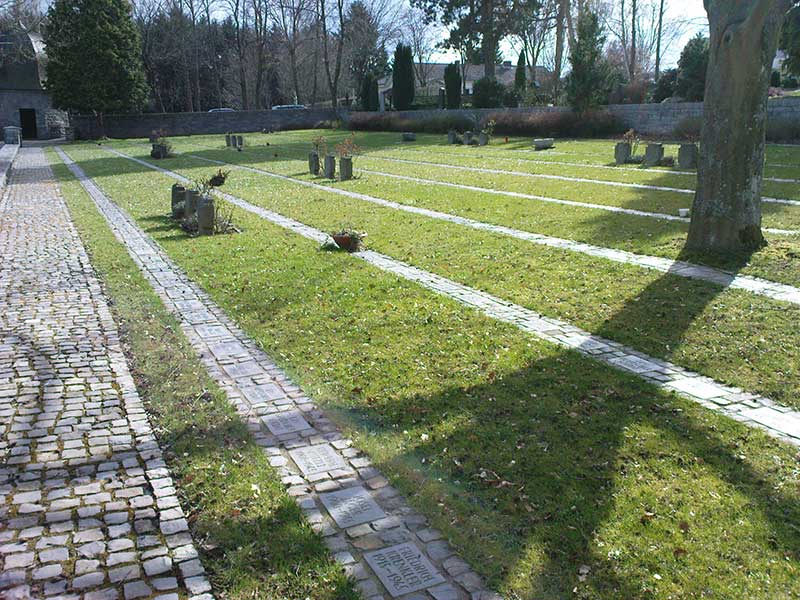
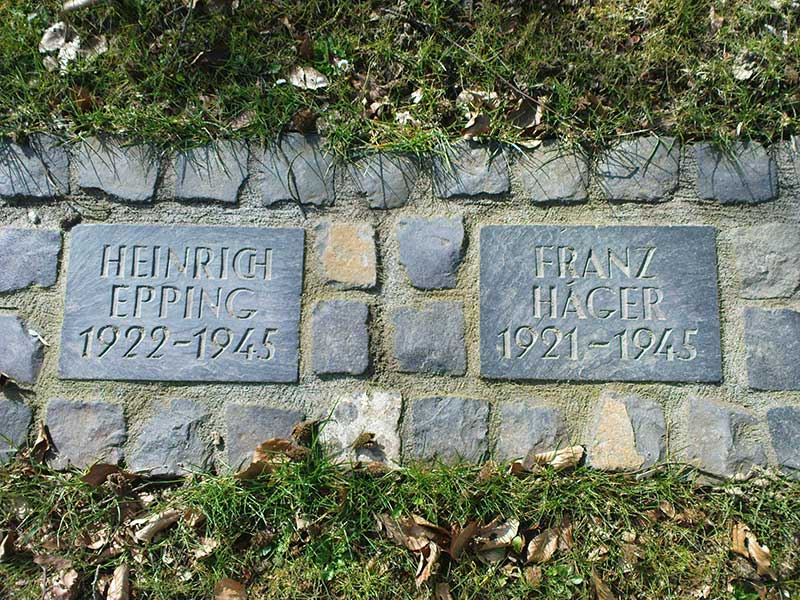
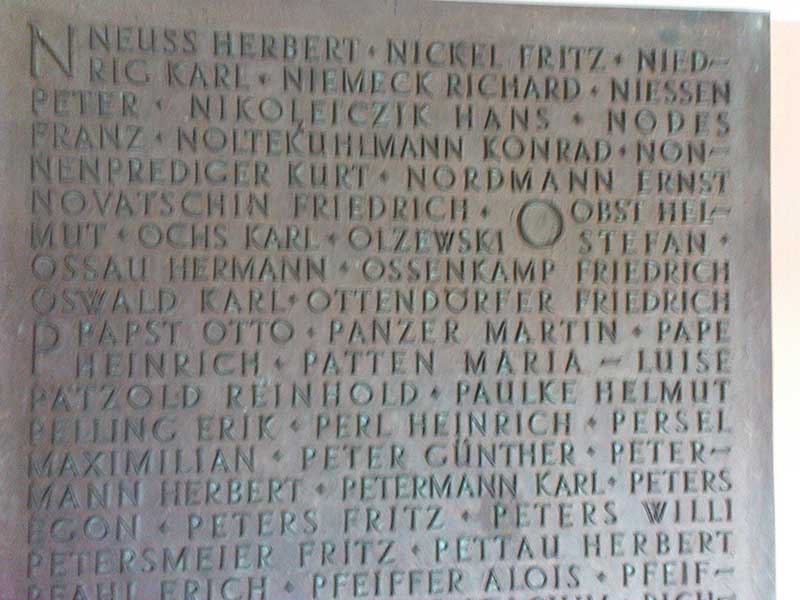
Note on Sources and Research
 |
National Archives, Records of German Field Commands : Divisions--After the war ended, the US Army microfilmed select portions of the German military and civilian records they were able to capture. The originals have been returned to Germany. War journals and activity reports for the 79. InfDiv are on microfilm from Aug 1939 to March 1945. Items from February to August 1944 were lost with the Division in Rumania.
|
|
|
 |
National Archives, US Army, Foreign Military Studies--After the war, the US Army collected the experiences of German officers of all branches. Most of the "reports" are in German, and have not been translated. The Division's experience in the Ardennes came from these studies.
 |
|
|
 |
Die 79. Infanterie Division, by Hans Sänger, a veteran of the Division. Most of the material for this history came from this book. The text is in German, and covers the unit from its inception to its end. The book is compiled primarily from Division members experiences. Since the book is a bit like an oral history, details for specific operations are lacking. |
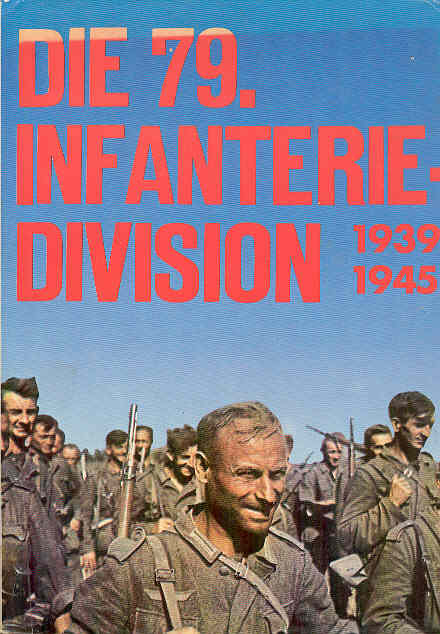 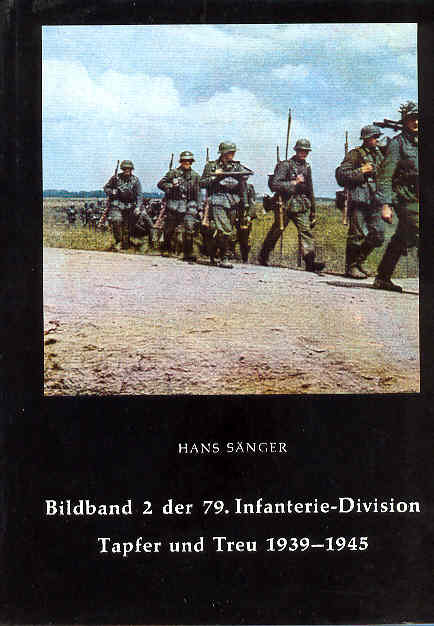
For more information on JR 226 and the 79. Jnfanteriedivision on the web, check out the link below:

|

